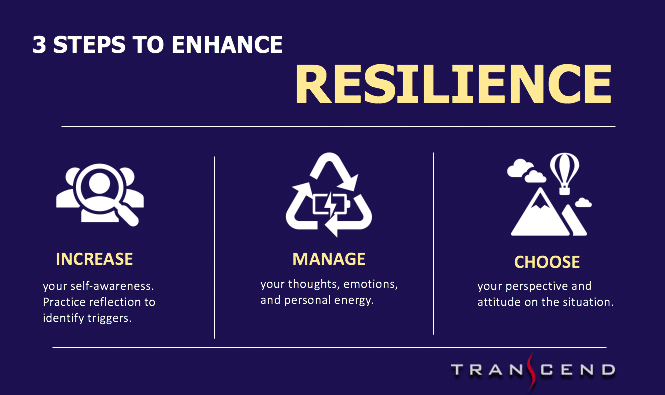05 May 3 Steps to Develop Change Resilience
One thing we can count on is that change is the only constant. At this moment, we are all experiencing changes associated with the COVID-19 pandemic, whether that means illness and loss, business challenges, isolation or simply disruption of your life and work routines. This kind of change, which is largely outside of our control, can provoke us to anger, frustration and resistance. Our ability to move beyond these emotional reactions and build proactive positive responses is change resilience.
What makes it seem so difficult to accept change and find a positive response? Some people appear to love change and thrive on the variety and excitement that it brings into their lives, while others seem to barely cope with and survive change, avoiding it if possible. You may even think “people don’t change” and yet most of us can think of someone who has made a major change in their lives at some point. So what causes some humans to be resistant to change when we know it is an inevitable fact of life?
Our emotional reactions stem from our lack of control over our own experience of the change. When we lack control we focus on our own loss – loss of connection, loss of income, loss of routine, even when the losses are unknown or offset by gains. This is part of our adaptive negativity bias – focusing on real and imagined threats to our survival. Change resilience is the ability to handle challenges, bounce back smarter and stronger, and thrive in the face of stressors and changing demands and opportunities. Building change resilience requires us to quickly recalibrate and take ownership and control of our thoughts and emotions, reframe the change we are experiencing and address the fears that create stress and overwhelm. We can begin to focus on the unexpected gifts and new opportunities presented by the change.
Resilience is a change-muscle that you can train and build stronger.
We are resilient when we understand our own and others’ reactions to the change, and when we are able to recognize when our stress levels are getting too high and to do something to reduce it.

3 STEPS TO STRENGTHEN YOUR RESILIENCE MUSCLE
- Practice thought awareness. Resilient people don’t let negative thoughts and emotions derail their efforts. Instead, they consistently practice self-reflection to identify negative triggers and reduce them.
- Manage your thoughts, emotions and personal energy. Remember, we all experience bad days and we all go through our share of crises. But we have a choice in how we respond; we can choose to react negatively or in a panic, or we can choose to remain calm and purposeful. Your response is always up to you.
- Maintain perspective.Resilient people understand that, although a situation or crisis may seem overwhelming in the moment, it may not make that much of an impact over the long-term and may even present some new opportunities. Choose a long-term positive perspective on setbacks and challenges.
Related Articles
Ready to fearlessly provide feedback and get positive results?
Our Fearless Leaders MasterClass® Program will help you develop the emotional intelligence and leadership skills needed to have effective conversations.
Sign up to reduce manager overwhelm and employee turnover.




